Massican 101: About The Wines
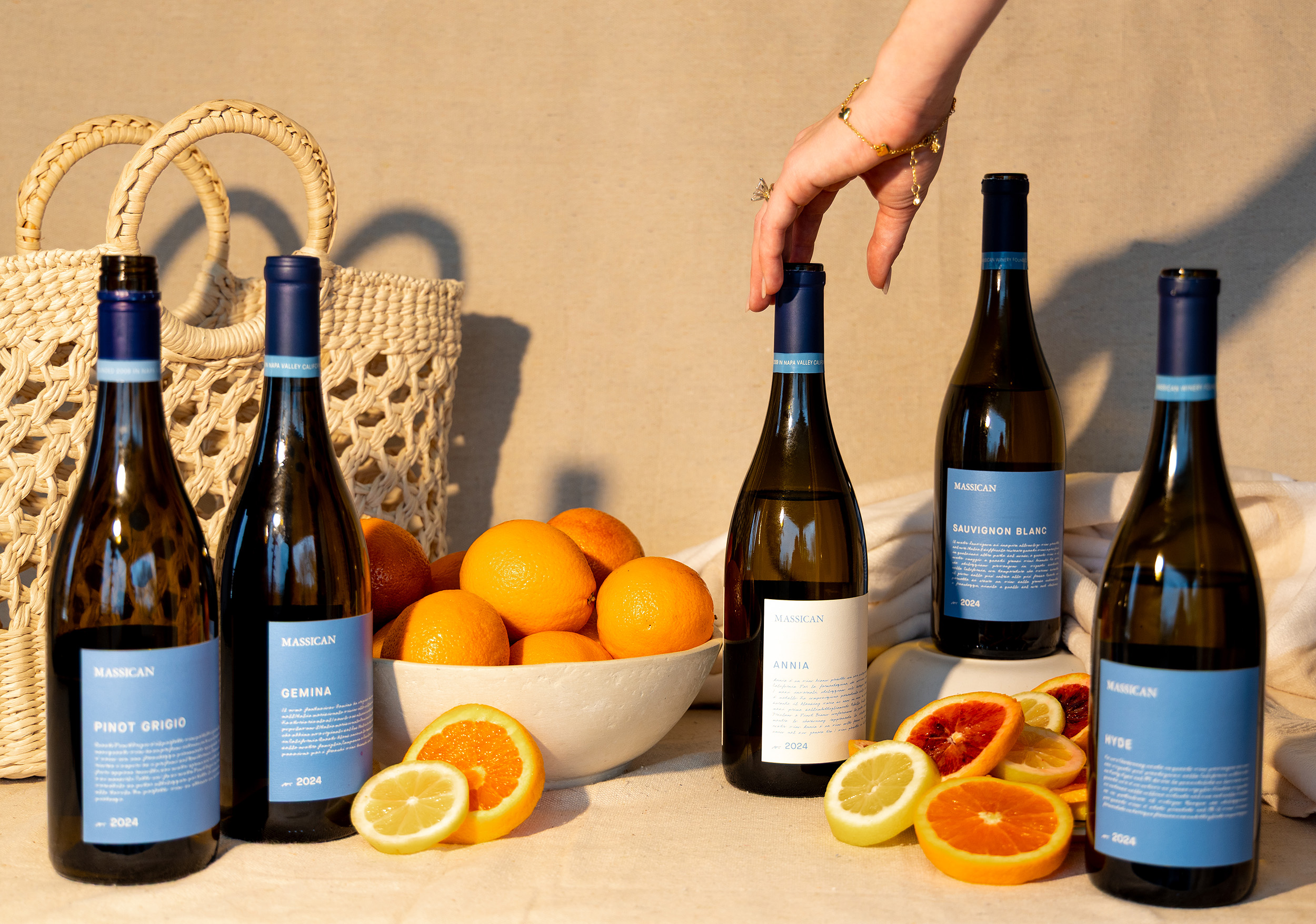
We Hope This Page Will Provide You With A Little Insight About Our Wines And Winemaking
The Massican (MAH-see-con) white wines are made from 10 grape varieties planted in 17 vineyards on California’s North Coast (north of San Francisco). All our vineyards are farmed at a minimum with sustainable standards and at a maximum with certified organic practices. The winemaking is respectful of the vineyards and the grapes, and therefore, there is little intervention during the fermentation process to convert the sugars in the grapes to the alcohol in the wines. The wines are fresh, bright, light on the palate, less than 100 calories per glass, have no residual or added sugar, and contain limited amounts of sulfites. Let’s dig in a little. Or a lot. (Or just click here for the wine pairings!)
Making WINE
Every grape from every vineyard is hand-harvested and fermented separately. The grapes are harvested at daybreak and then whole-cluster pressed at the winery. We settle the fresh-pressed juice overnight, decant it in the morning to barrels or tanks, and then ferment it with native or cultured yeasts in French oak barrels (80 gallons), stainless steel barrels (75 gallons), or larger oak vessels and stainless steel tanks (multiple sizes).
We also play music really loud during this process.
Ingredients
The ingredients in Massican wines are grapes, yeast (which converts sugar to alcohol), nitrogen (a nutrient that supports yeast development), and sulfur (which is added after fermentation for its antioxidant and antimicrobial properties).
The Massican wines are sugar-free (we ferment all the natural sugars and add no sugar before, during, or after the wine is made). The wines are also gluten-free and vegan. There are no allergens (egg, milk, fish proteins, etc.) in any of the Massican wines.
For your information, we use new French oak barrels for our Hyde Vineyards Chardonnay, which imparts smoky aromas and flavors.
Inside the Bottle
After we blend the wines (in January) and before we bottle them (late February), we sterile-filter them. We do this for two reasons: first, to remove any dead or active yeast cells that may cause the wines to re-ferment in the bottle, and second, this filtration process provides us with crystal-clear wines.
None of the Massican wines receive any fining (clarifying) agents prior to bottling, and they do not undergo cold stabilization to remove tartrates (acid crystals that form when the wine is exposed to excessively cold temperatures; to visualize this, think of a snow globe).
Our wines are bottled in lightweight glass, 468 grams (or 1 lb), and are made from 50% recycled glass produced in California. (If you are familiar with previous bottles of Massican, this is a 20% reduction in the weight of our bottles—in the last two years, we used 70k less lbs of glass and 20 tons less carbon in the creation of these bottles. We’re not done, though. We will continue to make our packaging as environmentally friendly as we can in the years to come.)
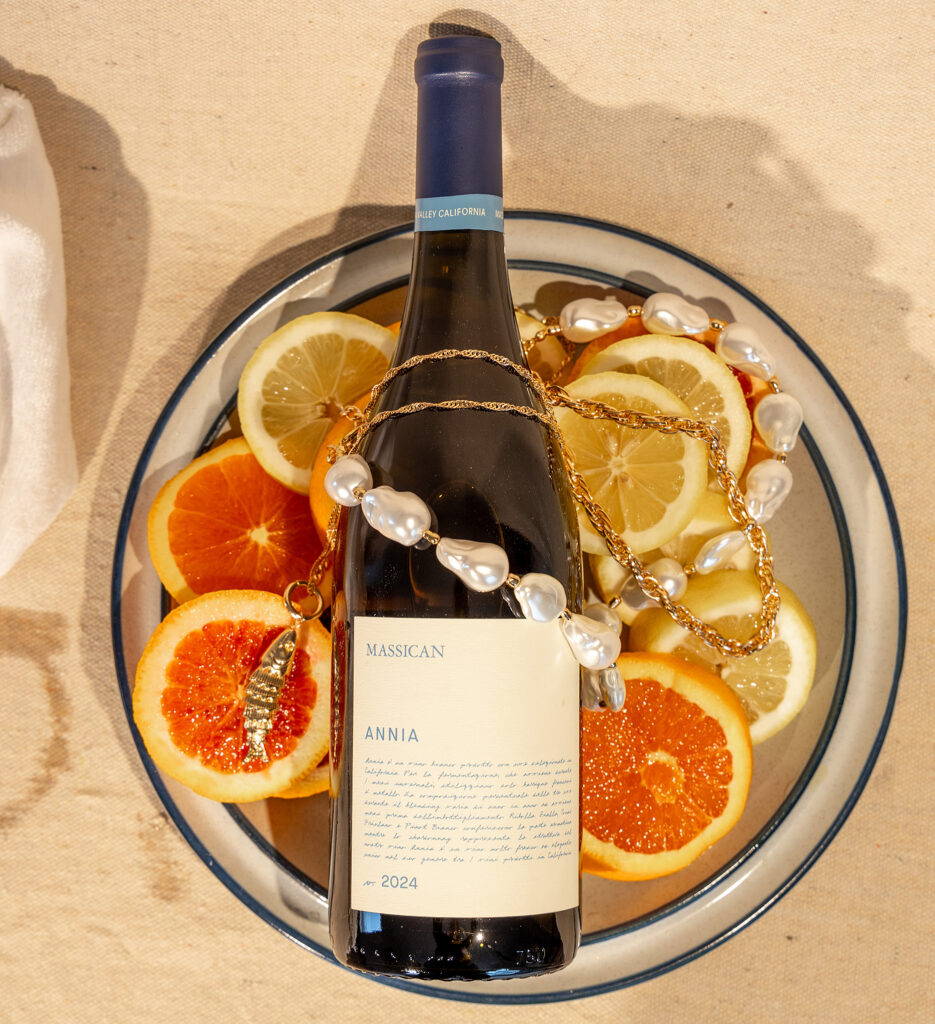
Annia
Ribolla Gialla 42%, Tocai Friulano 35%, Chardonnay 17%, Pinot Bianco 6% (37,968 Bottles)
Massican’s flagship “Cal-Ital” (Mediterranean white wine) blend contains 37% and 30% of all the Tocai and Ribolla planted in California. This is our Northern Italian white wine-inspired blend. The name Annia is the name of our founder and winemaker’s mom. Annia’s grandparents grew up in the shadows of the Massican hills (Monte Massico) just north of Napoli in the Campania region of Italy.
Annia is designated California appellation because the grapes are farmed in Napa (55%) and Sonoma (45%) vineyards.
Pronunciation: Ahn-knee-ah
Tocai is harvested from the following vineyards: Nichelini (Chiles Valley), Alta Vista (Carneros), and Bowland (Russian River).
The Ribolla is harvested from Vare/Bengier (Oak Knoll) and Bowland (Russian River).
The Chardonnay is from the Laguna Vineyard (Russian River).
The Pinot Bianco is from Yountmill Vineyard (Napa).
48% of the vineyards are organically farmed, and no glyphosate is used to control weeds at any of the vineyards.
Annia was fermented in 62% neutral French oak. The remainder is in stainless steel barrels and tanks.
The chemistry is as follows: 11.8% Alcohol, almost zero sugar (0.1 g/L), and moderate acid (3.5 pH, 6.6 g/L total acid, which includes 1.5 g/L malic acid). The wine contains very little sulfur, the equivalent of 0.002% of the composition of the wine itself.
Nutritional information: Each glass (4oz) of Annia has 87 calories, and drinking the full bottle (6 glasses) has 523 calories. Each glass contains 2 carbs and zero sugar, the equivalent of 0.1 grams per glass.
Critical reviews (new reviews coming soon, these are last year’s reviews), if this is your jam: Decanter (93 pts). James Suckling (93 pts). Wine Spectator (92). Vivino (4.1). Winemaker (Priceless).
Also, the Wine Spectator added Annia to its Top 100 wines of 2024 (#72), and VinePair tipped its hat to Annia as their 8th best wine of the year! (Mom would be proud!)
Where to drink: At home or your favorite restaurant. Click here for a map of restaurants and retailers close to home!
Food & Wine Pairing: Pair Annia with Friuli’s quintessential dish, Frico—a potato pancake with cheese. There are more pairing options at the link here.
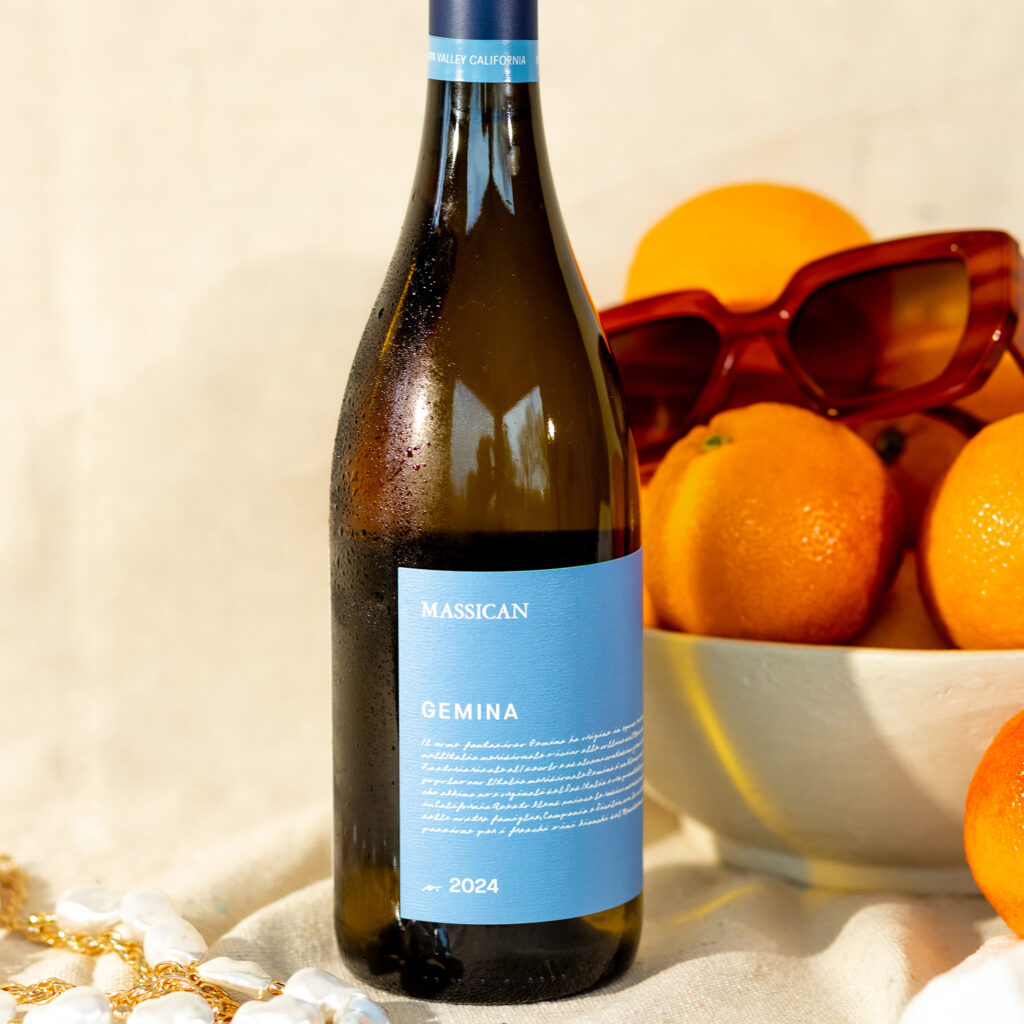
GEMINA
Falanghina 49%, Greco 45%, Fiano 6% (11,868 Bottles)
One of the most unique blends in white wine, Gemina, tastes like licking coral from the Mediterranean Sea around the Amalfi Coast. This is our Southern Italian white wine-inspired blend. The name Gemina is derived from the ancient Roman grape, Aminea Gemina, which is the DNA equivalent of the current grape, Greco.
Gemina is designated California appellation because the grapes are farmed outside of Napa and Sonoma (84%) and the remainder in Sonoma County (16%).
Pronunciation: JEH-mee-nah
The Greco is harvested from the following vineyards: Ferrendelli (Dunnigan Hills) and Bowland (Russian River).
The Falanghina is harvested from Lost Slough (Lodi).
The Fiano is from the Bowland (Russian River).
100% of the vineyards are organically farmed, and no glyphosate is used to control weeds at any of the vineyards.
Gemina was fermented in 100% neutral French oak.
The chemistry is as follows: 12.4% Alcohol, almost zero sugar (0.1 g/L), and very high acid (3.1 pH, 10.3 g/L total acid, which includes 3.9 g/L malic acid). The wine contains very little sulfur, the equivalent of 0.002% of the composition of the wine itself.
Nutritional information: Each glass (4oz) of Gemina has 92 calories, and drinking the full bottle has 554 calories. Each glass contains 3 carbs and zero sugar, the equivalent of 0.1 grams per glass.
Critical reviews (new reviews coming soon, these are last year’s reviews): James Suckling (92 pts). Wine Spectator (93). Vivino (4.1). Decanter (96 pts) Someone told us this is the highest-rated white wine under $50 that Decanter has ever given; therefore, Winemaker’s review – um, priceless.
Where to drink: At home or your favorite restaurant. Click here for a map of restaurants and retailers close to home!
Food & Wine Pairing: Gemina pairs perfectly with southern Italy’s premier dish—eggplant parm! Crazy to think, a white wine with eggplant parm. Try it. Let us know what you think! There are more dinner and pairing options at the link here.
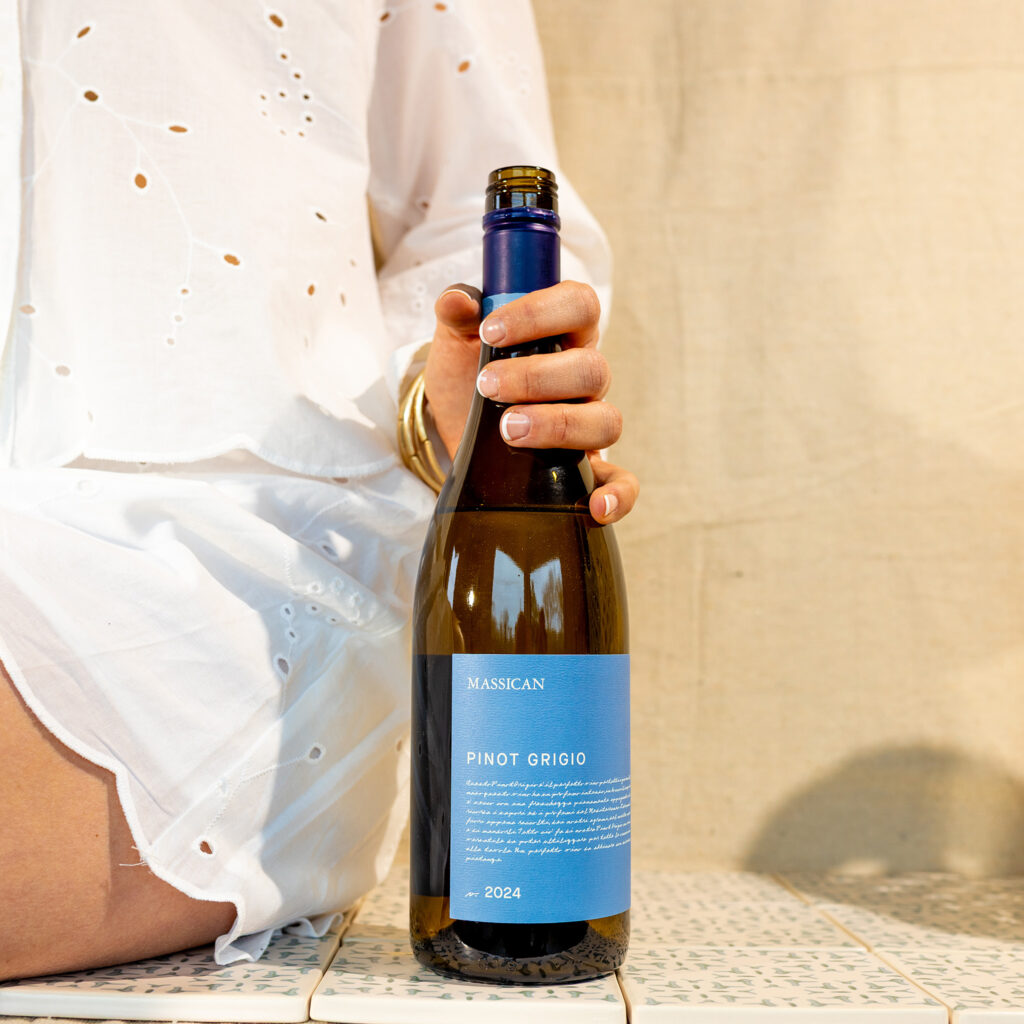
PINOT Grigio
Pinot Grigio 81%, Cortese 19% (50,424 Bottles)
Massican’s exploration of Pinot Grigio in a meaningful way. Look out Santa Margherita!
Our Pinot Grigio is designated California appellation because the grapes are farmed in Sonoma (74%) and the remainder in Lodi (26%).
The Pinot Grigio is harvested from the following vineyards: Balletto (Russian River), Bowland (Russian River), Thompson (Dry Creek), and Lost Slough (Lodi).
The Cortese is harvested from Lost Slough (Lodi).
29% of the vineyards are organically farmed, and no glyphosate is used to control weeds at any of the vineyards.
Half of this wine was fermented in large, neutral French oak foudre (1,650-gallon wood tanks). The remainder of the wine was fermented in smaller stainless steel barrels and tanks.
The chemistry is as follows: 13.0% Alcohol, almost zero sugar (0.1 g/L), and moderate acid (3.3 pH, 6.3 g/L total acid, which includes 1.7 g/L malic acid). The wine contains very little sulfur, the equivalent of 0.002% of the composition of the wine itself.
Nutritional information: Each glass (4oz) of Pinot Grigio has 93 calories, and drinking the full bottle has 556 calories. Each glass has 2 carbs and zero sugar, the equivalent of .1 grams per glass.
Critical reviews (new reviews coming soon, these are last year’s reviews): Last year was our first vintage of Pinot Grigio, and we are over the moon with our “critical acceptance.” Wine Enthusiast (94 points). Wine Spectator (92 pts). Decanter (92 pts). Vivino (4.1). Delicious!
Where to drink: At home or your favorite restaurant. Click here for a map of restaurants and retailers close to home!
Food & Wine Pairing: Pair your Pinot Grigio with spaghetti and clams. Or even mussels steamed in white wine at your favorite French bistro. There are more pairing options at the link here.
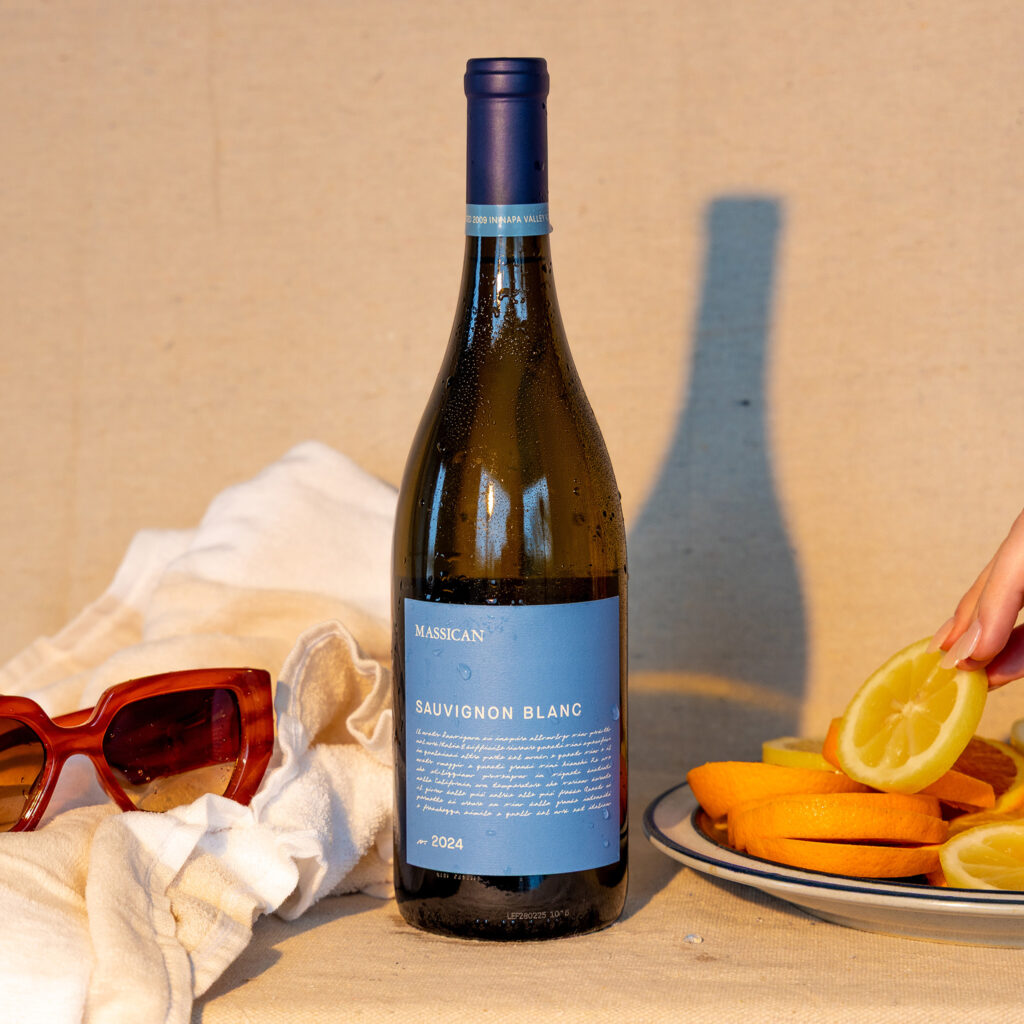
Sauvignon Blanc
100% Sauvignon Blanc (46,584 Bottles)
Juliana vineyard was originally planted for Mondavi’s Fume Blanc; it is now the backbone of California’s best SB—at least, we think so!
Our Sauvignon Blanc is designated California appellation because the grapes are farmed in Napa (80%) and Sonoma (20%) County.
Our Sauvignon Blanc is harvested from the following vineyards: Juliana (Pope Valley), Alta Vista (Carneros), Fish (Calistoga), John Anthony (Carneros), Dry Creek Vineyards (Russian River), and Asti (Cloverdale).
No glyphosate is used to control weeds at any of the vineyards.
Our Sauvignon Blanc was fermented in 27% stainless steel barrels and 16% neutral French oak barrels. The remainder is in stainless steel tanks (2k gallons).
The chemistry is as follows: 13.8% Alcohol, almost zero sugar (0.1 g/L), and very high acid (3.2 pH, 7.2 g/L total acid, which includes 2.1 g/L malic acid). The wine contains very little sulfur, the equivalent of 0.002% of the composition of the wine itself.
Nutritional information: Each glass (4oz) of Sauvignon Blanc has 113 calories, and drinking the full bottle has 96 calories. Each glass has 2 carbs and zero sugar, the equivalent of 0.1 grams per glass.
Critical reviews (new reviews coming soon, these are last year’s reviews): Nothing really matters except this write-up from Wine Enthusiast – this is the greatest 91-point review of a wine ever; please indulge us: “This is a really well-balanced, engaging, and fun Sauvignon Blanc that, alongside its light and lively attitude, shows elements of depth and complexity not often found in this white varietal. Nuanced notes of lemon, lime, green apple skins, beachy-sand salinity, jasmine flower, nasturtium leaf, cut grass, and dewy lawn daisy are carried by an energetic acidity yet simultaneously tamed by a smooth, almost glycerol-like texture. The finish is long and begs for another sip to be had.”). And, James Suckling (94). Decanter (94). Vivino (4.1) – wow, a lot of 4.1 scores from all our favorite Vivino users! Grazie!!
Where to drink: At home or your favorite restaurant. Click here for a map of restaurants and retailers close to home!
Food & Wine Pairing: Sauvignon Blanc pairs perfectly with Condiglione (an Italian Nicoise salad). Goat cheese on the regular, whether on rainy days, sunny days, or all the days. There are more pairing options at the link here.
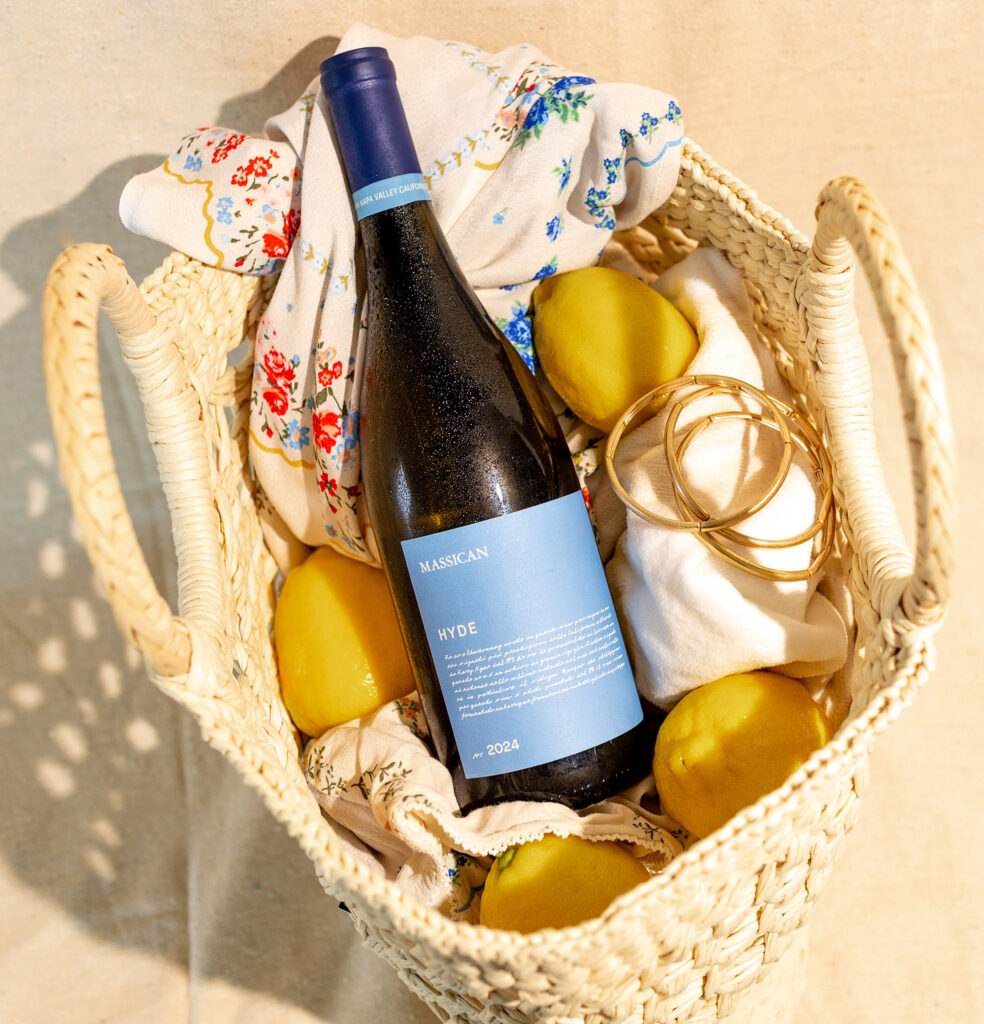
Chardonnay
100% Hyde Vineyard Chardonnay (6,300 Bottles)
Our single vineyard-designated wine is from Larry Hyde’s iconic Carneros vineyard. This could be the most unique and inexpensive Hyde Chardonnay on the market.
Our Hyde Chardonnay is a 100% Napa appellation wine because Hyde vineyards resides on the Napa-side of Carneros.
Our Chardonnay is planted at Hyde Vineyards. The vines were planted in 1979-1992.
100% of the vines are organically farmed, and no glyphosate is used to control weeds at the vineyard.
Our Chardonnay was fermented in 100% new French oak barrels.
The chemistry is as follows: 13.6% Alcohol, almost zero sugar (0.1 g/L), and high acid (3.2 pH, 7.6 g/L total acid, which includes 2.1 g/L malic acid). The wine contains very little sulfur, the equivalent of 0.002% of the composition of the wine itself.
Nutritional information: Each glass (4oz) of Chardonnay has 100 calories, and drinking the full bottle has 599 calories. Each glass has 2 carbs and zero sugar, the equivalent of 0.1 grams per glass.
Critical reviews (new reviews coming soon, these are last year’s reviews): James Suckling (94 pts). Decanter (95 pts). Vivino (4.2). Winemaker (Iconic 100% Chardonnay + 100% New French Oak = 200 points. Just sayin’.)
Where to drink: At home or your favorite restaurant. Click here for a map of restaurants and retailers close to home!
Food & Wine Pairing: The Venetian Sarde in Saor — fried sardines with a vinaigrette — is pure perfection with Chardonnay. So is Bossa Nova – check out our playlist here. And more pairing options here.
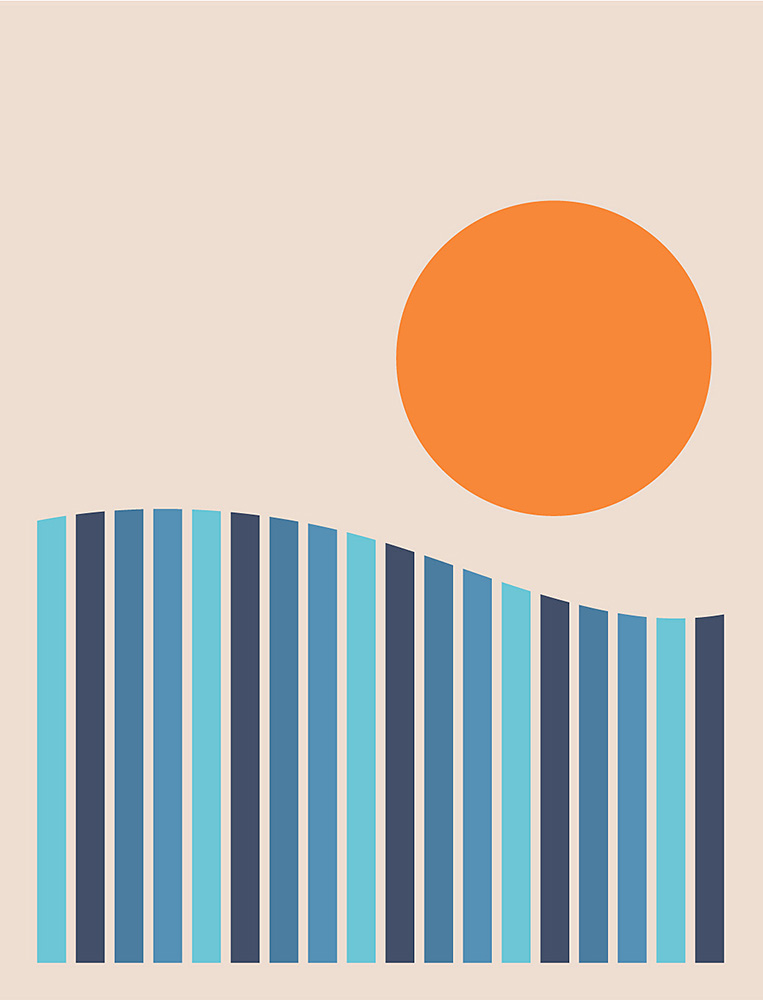
Our “Icon”
Original Art by Amber Vittoria.
In collaboration with the talented artist Amber Vittoria, we created a symbolic image of Massican, a rising or setting sun or moon over water.
This icon debuted on the 2023 wine labels as a utility. The sun or the moon on the back label is a QR code that leads you to this page, where you will probably find more info than you could imagine.
But we’re not done yet! If there is anything on this page that you would like to see, learn about, or learn more about, call or text our winemaker, Dan Petroski, at (707) 843-0268. You can also e-mail him at dan@massican.com.
But more importantly, Amber’s beautiful artwork! We look forward to integrating our iconic emblem into more of our ethos because it really reminds us of escaping to the Mediterranean.
And give Amber a follow on IG, she is the best.
When To Drink THe MASSICAN WINES
We love the Massican wines when they are fresh, young, and crunchy – that would be the calendar year after the vintage on the bottle. If you are drinking them in the Springtime and Summer, the wines will be vibrant and joyous on the palate. And if you start drinking them in the Fall of that year, they become such great winter white wines as they build more weight and texture on the palate and pair well with heartier dishes.
Dan’s POV: Personally, I make the Massican wines to reflect my nostalgia for the young, fresh Mediterranean wines I was drinking right out of the tank when I was living in Italy. The wines are meant to be drunk, fresh, and young, full of flowers on the nose and citrus and salt on the palate.
A perfect segue to tell you a little bit more about our winemaker: Dan Petroski was born and raised in Brooklyn, NY, and has the swagger and the accent to prove it. After attending Columbia University, where he played football, Dan went to work for Sports Illustrated and then TIME magazine. While there, he earned his MBA from NYU and worked his way up the ranks toward a promising future in magazine publishing.
A good chunk of his tenure at Time was spent managing advertising clients, which involved considerable schmoozing. This is how Petroski learned wine, by walking his expense account through the lists of Manhattan’s top restaurants. When the Wall Street Journal tried to poach him, Dan took a moment to reflect. He jettisoned to Sicily for a year, where he interned at Valle dell’Acate. While Dan’s intention was to return to New York to sell wine, a harvest invitation in 2006 was too good to pass up, and Dan left the city again, this time facing west.
After harvest, Petroski was hired as cellar master, ultimately claiming the Larkmead winemaker title in 2012. Dan spent nearly 15 years at Larkmead, cementing his status as a top-tier Napa Valley Cabernet winemaker. During that period, Dan launched a white wine-only brand called Massican, an ode to the Mediterranean and Dan’s time spent living in Italy and drinking white wine. Growing and developing Massican to become California’s greatest white wine brand is Dan’s primary focus now.
Petroski’s approach and ability to craft wines as diverse as Cabernet Sauvignon and Tocai Friulano have earned him recognition as San Francisco Chronicle’s Winemaker of the Year in 2017, Food & Wine magazine’s Drinks Innovator of the Year in 2022, and VinePair’s Winemaker of the Year in 2024.
Petroski is also a fervent communicator and supporter of educating about the future challenges the wine industry faces in a climate-changing world, and he walks the walk to back it up. Dan serves on the Board of the Napa Valley Grapegrowers as Chair of the Environmental Stewardship and Viticulture Committee, where he oversees land use policy, climate change, water rights, wildfire, pesticide regulation, and more. He also serves on the Board of Napa Green, a global leader in sustainable winegrowing certification.
If You Got This Far, Let’s Eat
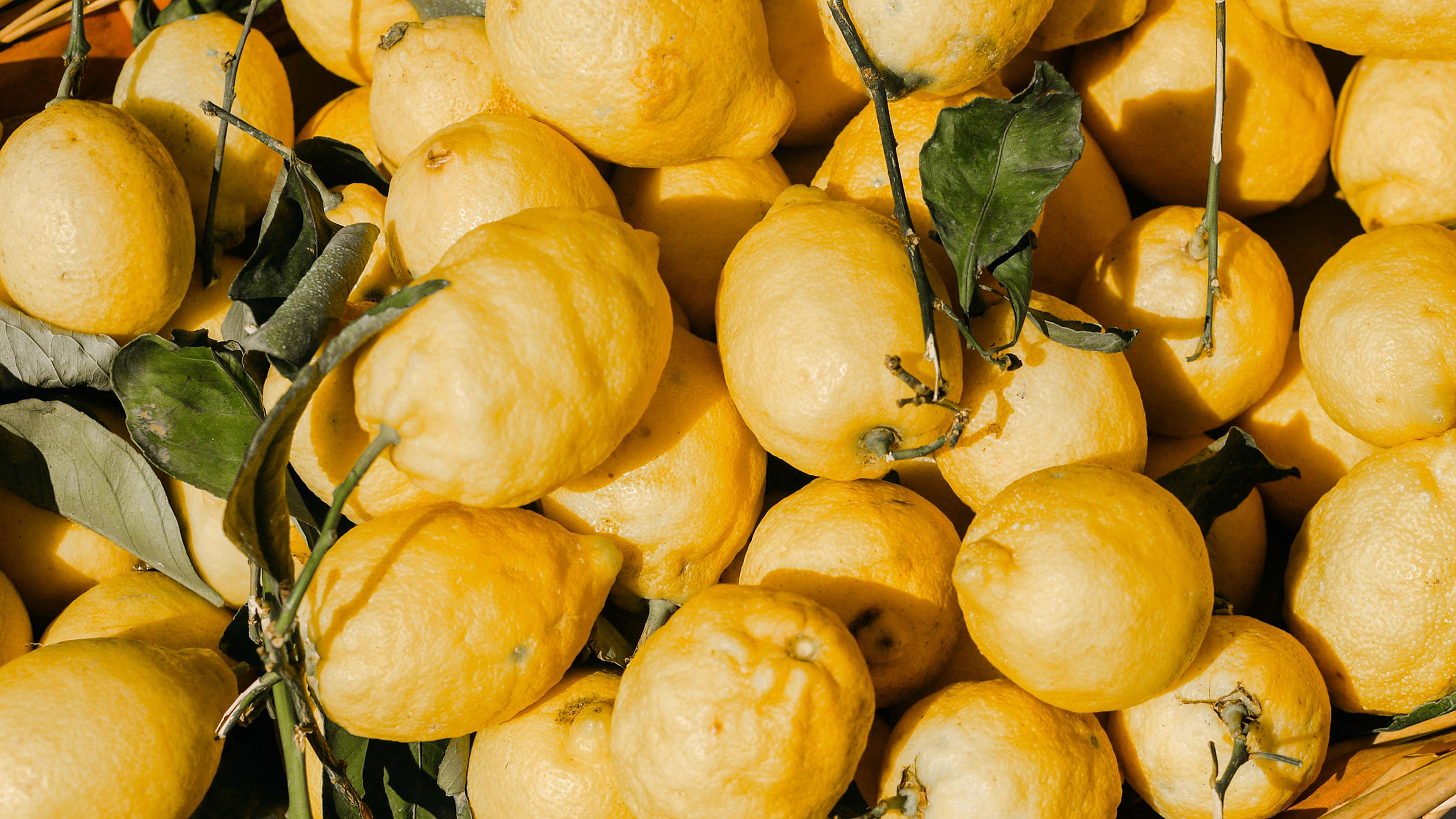
We have been writing an Italian cookbook! Our cookbook, written by James Beard award-winning writer Jordan Mackay and Top Chef contestant Sara Hauman, explores regional Italian cuisine curated in a dinner party format. We currently have 16 chapters online and are updating the “Italian Pantry” in our newsletter on the Substack platform. But we will be migrating all those recipes over to the website soon!
In the interim, here’s a short list of perfect pairings: Annia with Friuli’s quintessential dish, Frico – a potato pancake with cheese! Gemina will surprise you – the southern Italian-inspired wine with fresh citrus and salty flavors pairs perfectly with southern Italy’s premier dish – eggplant parm!
If you love Pinot Grigio, you love thinking about your Mediterranean vacation. And if that vacation was anywhere near water (which from any point in Italy is only about a two-hour drive), you probably had spaghetti and clams. Or maybe you had a “linguine alle vongole” in your favorite Italian restaurant back home. Either here or there, Pinot Grigio is your best bet.
Allora, let’s lean into our “French” grapes, which have a very Italian profile in a Massican bottle of wine. Our Sauvignon Blanc is the perfect pairing for Condiglione (an Italian Nicoise with a tuna vinaigrette). Deliciousness is found here.
Last but not least, the Queen of white wine grapes, Chardonnay. We love Chardonnay in all its forms – from Champagne to California white wine – but we also love to pair it with working-class Sardines. As true Italian-Americans, we made it a point in crafting the Massican cookbook to include some sort of sardine/anchovy dish in every dinner party menu, and one of our favorites is the Venetian Sarde in Saor – fried sardines with a vinaigrette – pure perfection with Chardonnay.
Cheers, everyone. There are so many more recipes to come! And if you have any questions about the wines, ping our winemaker, Dan. He is available for all your questions. We really don’t understand if he sleeps, but we know he loves to hear from you.
XO
